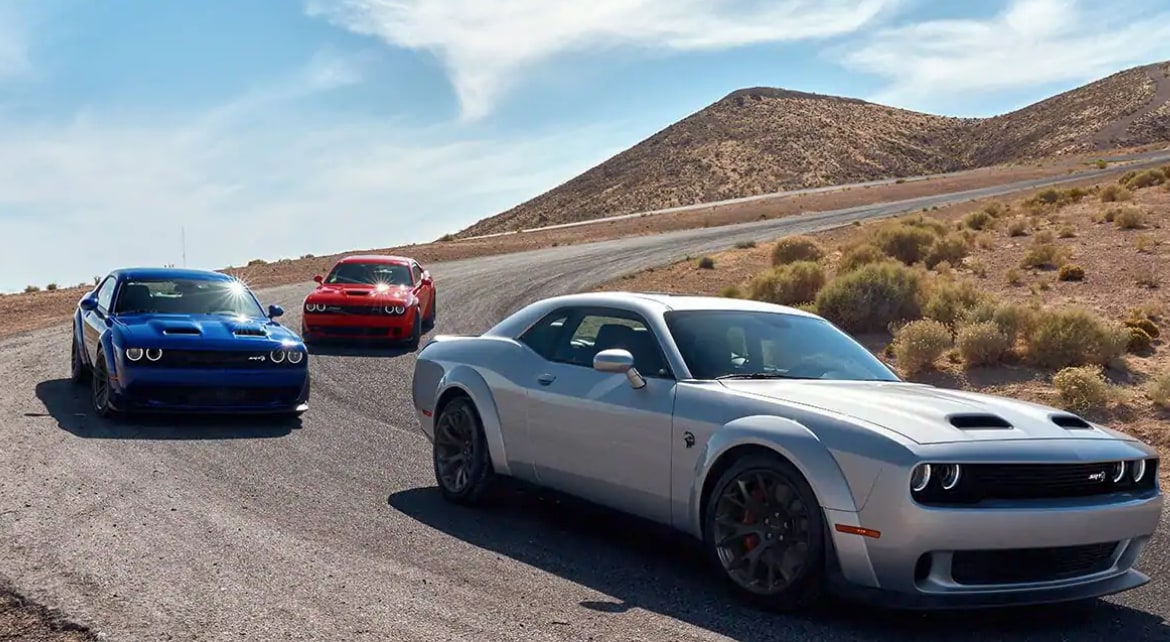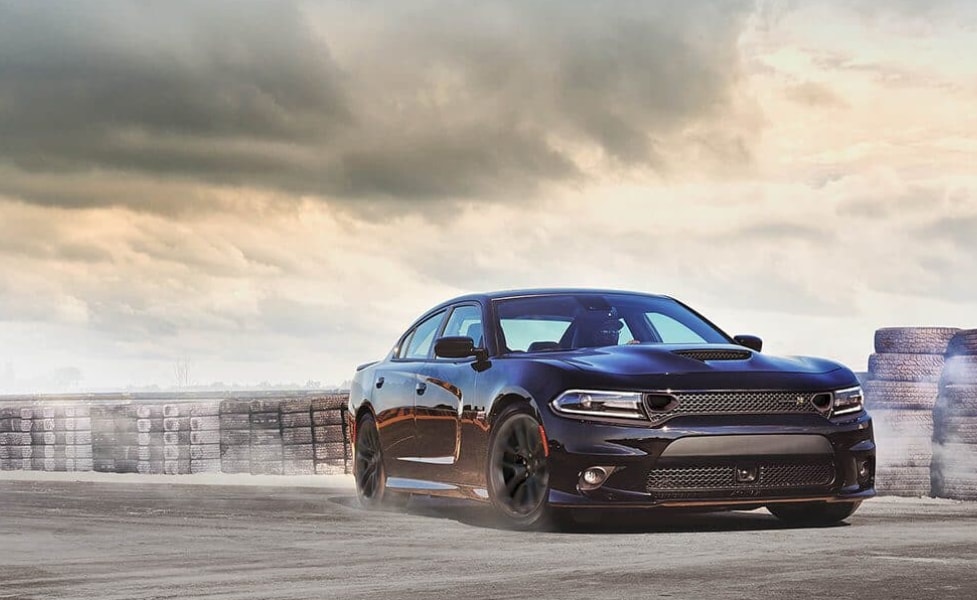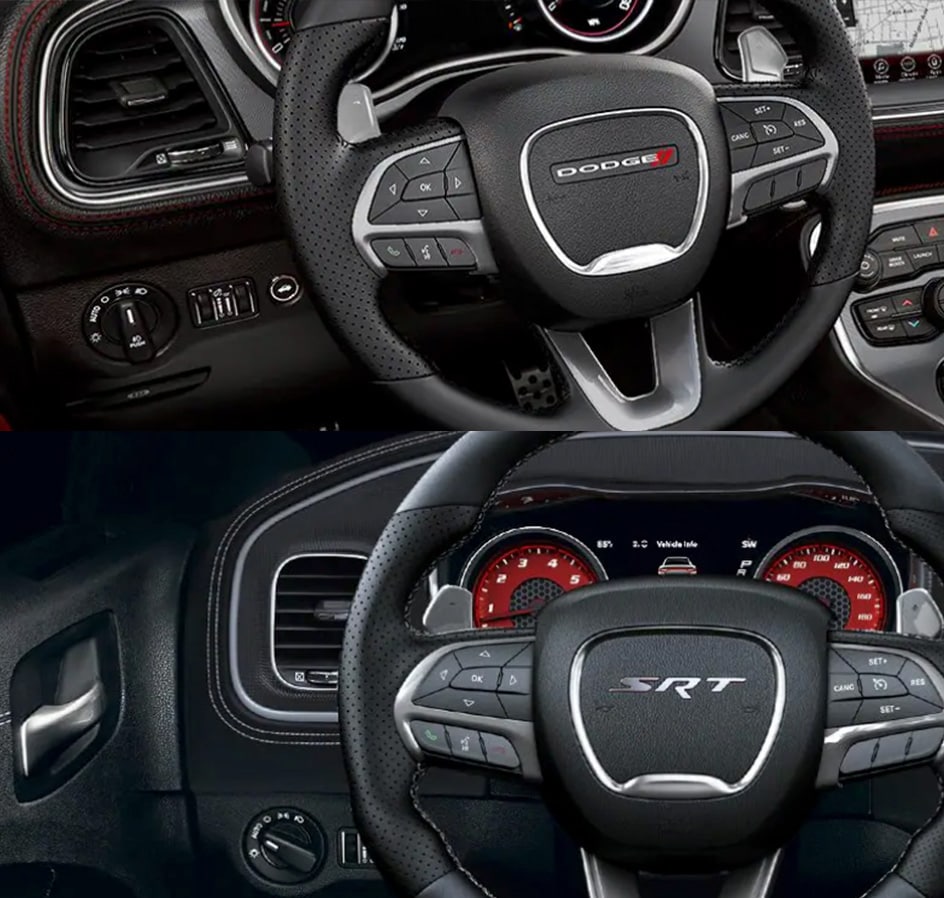Comparing Powertrains
The big year for improvements on both of these cars was 2015. That's when Dodge debuted the new eight-speed automatic transmission to replace the old five-speed. The Challenger and Charger got new looks and added trim levels. That year also marked the debut of the 707-horsepower Challenger Hellcat version.
Both cars have a variety of available powertrains for 2021. They offer a base model 3.6-liter V6 that bridles 305 horses and 268 pound-feet of torque. There are two V8s on tap including the 5.7-liter, 370 horsepower version with 395 pound-feet of torque and the automatic transmission, or the mighty 6.4-liter, 485 horsepower with 475 pound-feet of torque version with a manual gearbox available on the Challenger.
If more power and white-knuckle speed is what you crave, both cars come with Hellcat versions.
We're talking about supercharged 6.2-liter V8s that produce 707 horsepower and a staggering 650 pound-feet of torque. We find that the 6.4-liter V8 is more than enough to get you to the bowling alley and back with plenty of throaty rumble and tire squealing.
Gas Mileage
The V6 versions obviously provide the best EPA estimates. Though the four-door Charger is a bit heavier, both cars receive nearly identical gasoline economy ratings. The V6 gets an EPA estimate of 23 mpg in combined city/highway driving. All-wheel-drive variants drop to 21 mpg combined.
The 5.7-liter V8 is paired exclusively with rear wheel drive and is rated at 19 mpg combined city/highway. With a six-speed manual, the numbers drop to just 18 mpg. The 6.4-liter V8 is predictably even worse, getting 18 mpg combined with the eight-speed automatic transmission and 17 mpg with the manual tranny. The formula here is simple: the more power to the pavement, the more you'll pay at the pump and those V8s require premium fuel.








